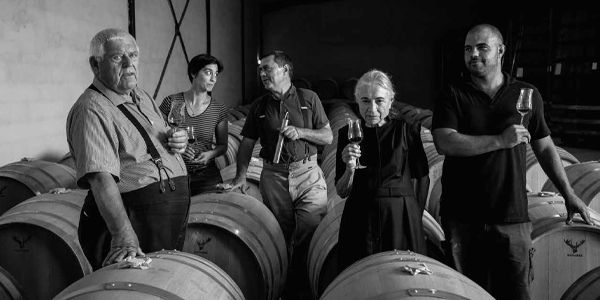

As a spirit, cognac must be misunderstood about as often as it is brandished by a rapper in a music video. Which is to say, a lot. So let's start by clearing some things up. First of all, what is it? In basic terms, it is a spirit distilled from wine made from grapes grown in the Cognac region. All cognacs are brandy, but not all brandy is cognac. Very special brandy indeed, though, with Victor Hugo once referring to cognac as ‘the liquor of the gods.’ Oh, and by the way, if it says ‘Champagne’ on the label that does not mean the drink is fizzy, nor does it in fact have anything at all to do with the Champagne area of France.
Clear as mud, right? Ok, so maybe cognac is misunderstood for a reason; let's dive a bit deeper.
When the Hundred Years War was wrapping up and the Renaissance underway, commerce was beginning to boom, and in few places more so than the river city port of Bordeaux. French monarchs looked to drain the marshes around the town and other parts of the south-west, and in particular they looked to the Dutch as avid merchants and swamp clearing specialists.
The Dutch, for their part, fell in love with the region's wine, and wanted to profit from it, but found that it travelled poorly. They took to distilling the wine when it arrived at Amsterdam, before returning it to the barrel to ship overseas. The resulting spirit was a hit, and given the rather literal name of ‘brandewijn,’ or ‘burnt wine.’ Further entrepreneurial innovation cut out the Amsterdam middlemen, and instead the wines of Cognac were distilled in situ.
Some time later, a local French aristocrat had a dream wherein the devil cooked him in a cauldron, but had to boil him twice in order to damn his soul. Said lord woke from that nightmare and somehow took from it the idea to distil his brandy twice, rather than the single distillation that had been the norm. The idea, however malefic its origin, caught on and became first the standard, and then the mandate.
Since then, cognac has had its fair share of turmoil over the centuries, from huge slumps in demand thanks to the blockade of Napoleonic France to the ravaging of vineyards by Phylloxera. As rules, traditions and regional know-how have crystallised however, acclaim and recognition of Cognac as one of the world’s great spirits has only increased.
As in Champagne, much of the control of production and dominance of sales has come to rest in the hands of a small number of very large brands. The ‘Big Four’ of Hennessey, Remy Martin, Martell and Courvoisier have a production that dwarfs the combined efforts of the region’s hundreds of other distillers by a significant margin. Their size and scale have helped to propel cognac onto the global stage, with excellent bottles available at a number of price points.
Similarly to champagne again, smaller houses continue to exist and thrive. Lheraud and Tesseron are fantastic examples of family-owned producers offering interesting and unique cognacs.
The drink itself is versatile and lends equally well to classic cocktails, mixers and straight. Younger examples, such as those labelled VS and VSOP, may have a sharper, brown sugary taste that pairs deliciously with soda, ginger ale or lemonade, while the XOs and rare vintage bottles often have the distinctive rancio aspect (think tropical fruits, cigar box and earth) that is best enjoyed neat.
VS: minimum age of two years.
VSOP: minimum age of four years.
Napoleon: minimum age of six years.
XO: minimum age of ten years.
Petite Champagne cognac or Grande Champagne cognac: This means the grapes that have been fermented and then distilled into this brandy have come from one of these two sub-regions within Cognac. There are six such sub-regions in total, but Petite Champagne and Grande Champagne are the most prestigious and thought to produce the finest, longest-lived eau-de-vie.
Fine Champagne cognac: A blend of eau-de-vie from both Petite and Grande Champagne, with at least 50% of the blend coming from Grande Champagne.